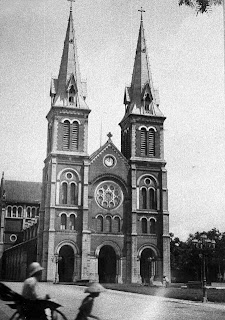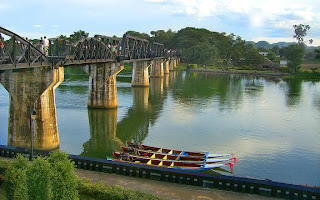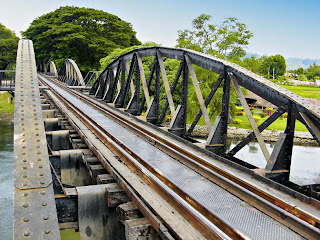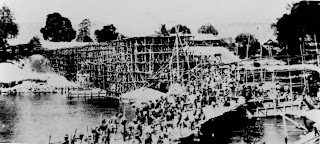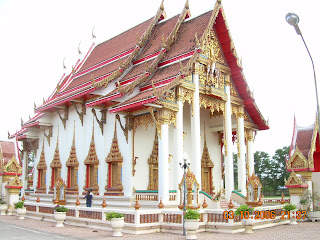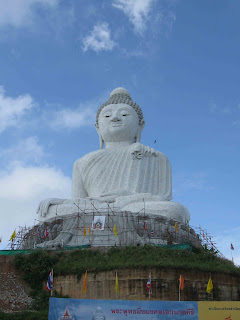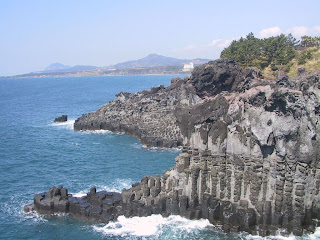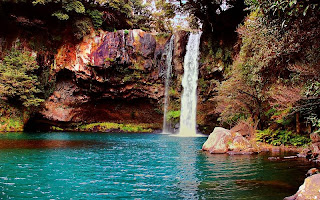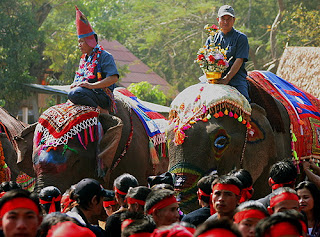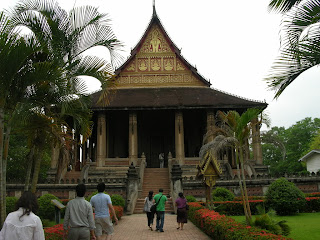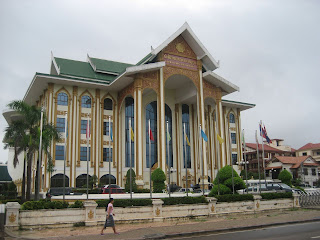Nha Trang Bay, lying between the other two bays, has been acknowledged as one of the most beautiful bays of the world. With such natural gifts as the position, landscape, climate, together with its rich background in culture and humanities, Nha Trang - Khánh Hòa is fully capable of developing many diverse forms of tourism.
 |
| Nha Trang - Vietnam |
How to get there
- By plane: Cam Ranh Airport built on the grounds of an old American airbase in 2004, is located 30km from the city and serves only domestic destinations
- By train: Nha Trang is a stop on the main railway-line connecting Hanoi and Ho Chi Minh City (HCMC or Saigon). The railway station is close to the cathedral in the northern part of town
- By bus: Most open tour buses arrive from Ho Chi Minh City in the south (10-12 hours) and Hoi An to the north (10 hours). North to Qui Nhon 4-5 hours.
- By car: Private car rental with a driver are usually modern air-con cars and can be rented. Car rental prices (as mostly anything in Vietnam) usually increase during holiday seasons especially around Tet (Vietnamese’s New Year). Make sure to avoid high prices by booking it beforehand with the car rental services.
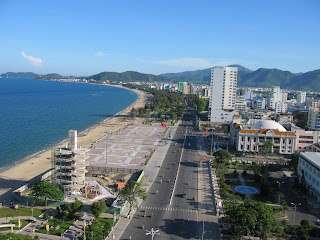 |
| Nha Trang - Vietnam |
How to get around
Tran Phu is the backbone of the city, accompanied by a pleasant waterfront promenade, palm trees and the nearly 6km of beach.
- Nha Trang has a reliable and easy to navigate public bus system, where the ticket fare does not exceed 3000 dong for a ride on a modern, air-conditioned bus with Vietnamese music. You will find buses nr. 3 and 2 the most useful, since they pass through the southern quarters.
- Alternatively, you'll find the usual selection of taxis, cyclos and motorbikes. Taxis are a good option, but be sure they turn on the meter to get the cheapest price.
- A wonderful option for seeing the sites is to hire a cyclo-driver for the day.
- Its also easy to get around by bicycle. Nha Trang is quite flat and bicycles are easily found for hire.
 |
| Hon Mun - Nha Trang - Vietnam |
See
- National Oceanographic Museum of Vietnam: 01 Cau Da (on the left of the commercial port entrance). This is like an aquarium with popular and rare species of the sea. A perfect place to bring kids as they will get to see sharks, turtles, coral reefs, lionfish, sea horses, and many other creatures.
- Alexandre Yersin Museum: 10 Tran Phu St. This is a scientific museum of a Swiss-born, Dr. Alexandre Yersin (1863-1943), who arrived in Vietnam in 1891 to study infected animals. He then later on produced a serum from horses and buffaloes. In this museum, you will be able to view all of his work as well as his equipment. Yersin never went back to Switzerland as he spent the rest of his life in Nha Trang. Don’t try to take pictures. Do respect the rules since they're quite serious here.
- Long Son Pagoda: Thai Nguyen St. At this pagoda, you will see a 79 ft. tall white Buddha. The pagoda was established in 1963 to honour the monks and nuns who died demonstrating against the Diem government.
- Po Nagar Cham Towers: 2 April St. These towers were built by the Cham civilization between the 7th and 12th century to honor Yang Ino Po Ngar, mother of the kingdom. The local Buddhists of Nha Trang occupied this place for prayers and worshipping, and there are many incense lighted giving the place an interesting aroma. The Po Ngar Kalan is a very glorified structure with amazing architectures filled with stunning colors. It is a 20-25 minute walk from the main beach strip, however be prepared to wander through the 'real' Nha Trang, quite a shocking change from the showy built up beach side resort.
- Bao Dai Villa:. The Bao Dai Villas are located on top of a small hill. You have a beautiful view of the Nha Trang bay from there.
- Vinpearl land: you can take the cable car over to the island where Vinpearl resort and Vinpearl land is located. There are underwater World (aquarium), Water Park complete with many exciting water slides and wave pool, Amusement Park with roller coaster, pirate ship, bumper cars, 4D cinema and many modern arcade machines and musical fountain and laser show at night time.
- Doc Let beach, (around 40 km north of Nha Trang). Doc Let beach is more tranquil, cleaner and beautiful than the beach in Nha Trang. It is well worth taking a tour there. Local fishermen families sell and prepare seafood which they will cook for you on the beach for a very reasonable price.
 |
| Doc Let beach - Nha Trang - Vietnam |
- Yang Bay Waterfalls, (40 km west of Nha Trang). You can swim there, and walk around in the area. You should probably bring your own food and drink when you go there though.
- Thap Ba Hot Springs and Mud baths, On the north side of Nha Trang. for hot and cool swimming pools and thermal waterfall.
- Nha Trang Cathedral. Located on a hill overlooking the city, the cathedral shows the influence of French Catholicism. It's a Quaint, free and quick sight to see. The Nha Trang area still has a strong Catholic population.
Things to do
- Boat Cruses: The going rate for a one-day multi-island tour with snorkeling, fishing, and many other activities among the possibilities. Tours may provide lunch with drinks on board. Booking agents abound, so compare itineraries to find the best fit for you.
- Sailing : Get a group together and rent out a captain for a best sailing experience.
- Biking and Rafting Tour: Combination fast 30km downhill biking passing through minority village and meeting Raglai people. Then a 12km rafting trip down the Cai River.
- Relaxing – Thap Ba natural hotsprings: Located on the outskirt of the city, this place provides the most relaxing services you can imagine (hot mud bath, mineral water bath and hot water pool and massages also available).
- Live music at the cafes: Many cafes in Nha Trang have live music at night time. They vary in type and quality, so ask around.
- Enjoy the fresh sea food. The sea food in Nha Trang is famous in Vietnam. All kinds of cuttle fish shell fish, fresh fish etc can be found and it is very delicious
- Cooking Classes - Lanterns Vietnamese Restaurant: Half day cooking classes for visitors to Nha Trang. It is a great experience and a must do for someone looking for variety to their trip to Nha Trang and something a little different. It involves travelling to the local market in a cyclo, a guided tour of the marketplace, where you get involved in buying the food. You then return to the restaurant where you prepare 3 dishes as chosen by the guests.
- Diving & snorkeling: Close off-shore from Nha Trang sit a series of islands that offer decent diving and snorkeling, easily accessible by day trip. The city has about two dozen dive shops, making for fierce competition and great value. For certification training, Nha Trang offers perhaps the best value in the world.
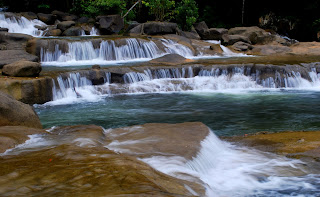 |
| Yang Bay Fall - Nha Trang - Vietnam |
Hotels
- Yasaka Saigon Nhatrang Hotel:
Located right on the beachside,Yasaka-Saigon-Nhatrang Hotel is an international four star Hotel with 201 luxurious guest rooms, facilities and services that meet to the requirement of both leisure and business travelers. With a swimming pool and a Jacuzzi on top, a tropical garden, and other services like massage, steambath, tennis court, fitness center, we would like to say : Yasaka-Saigon - Nhatrang is a Beach Resort Hotel and Spa.
Add: 18 Tran Phu, Nha Trang City, Viet Nam
Tel: (84-58) 3820090 ; Fax: (84-58) 3820000
- Nha Trang Lodge Hotel:
Guest staying in Nha Trang Lodge Hotel will be pleasant by the well skilled & professional staffs.In fact , from its opening in July 1996, our hotel has been the center of important events in the city.
Add: 42 Tran Phu Street, Nha Trang City, Khanhhoa, Viet Nam
Tel: (84-58) 3521500/521900 ; Fax: (84-58) 3521800/522922
- Hai Yen Hotel:
Hai Yen hotel was built with french style architecture. It is located right in the heart of Nha Trang city and 5 minutes from the airport and train station. Especially, it is just opposite the white sandy beach.
Add: 40 Tran Phu Street, Nha Trang City, Viet Nam
Tel: (84-58) 3522422 ; Fax: (84-58) 3522252
- Que Huong Hotel:
Que Huong - an international standard hotel stands right in the heart of Nha Trang city. It is situated on the most picturesque and romantic Tran Phu Boulevard of the municipal beach. The hotel consists of 56 international standard and comfortable rooms with fully well-equipped facilities, excellent services and courteous hotel staff.
Add: 60 Tran Phu St., Nha Trang City, Viet Nam
Tel: (84-58) 3827365 ; Fax: (84-58) 3825344
(Nha Trang Travel and Wiki)

